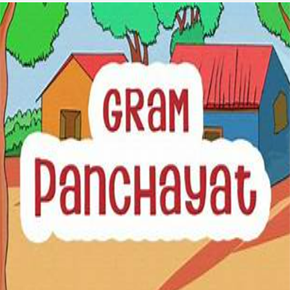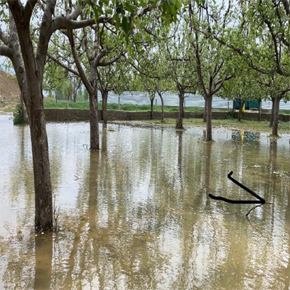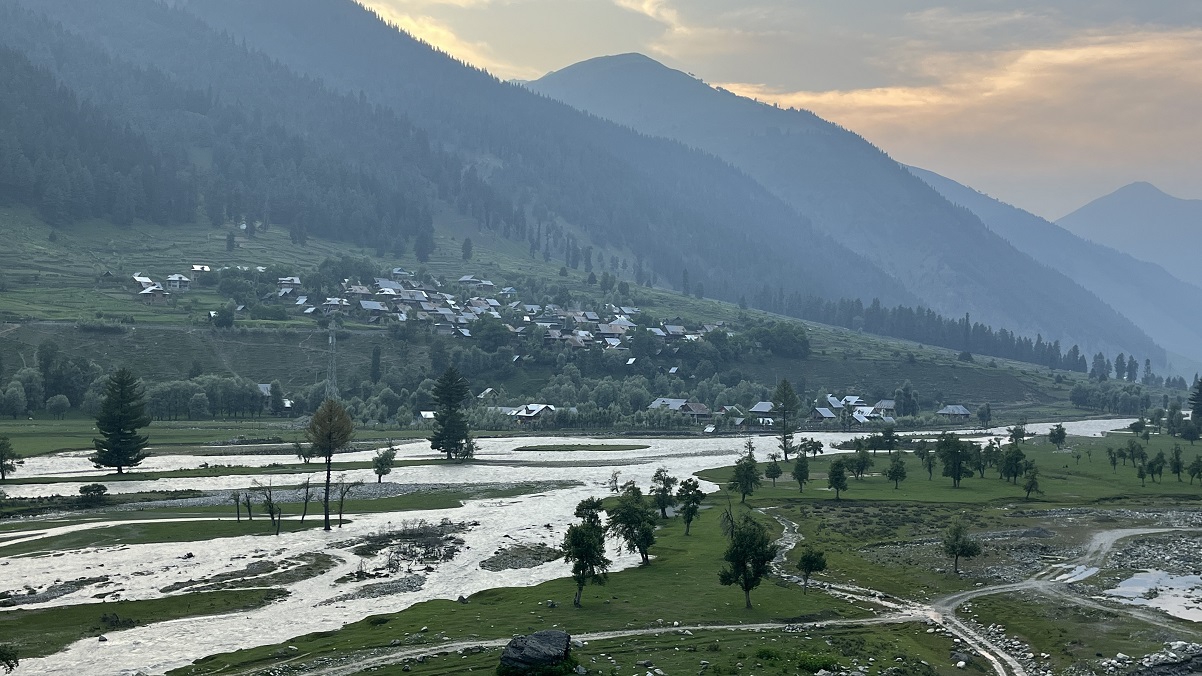EARTH Day which was commemorated on April 22nd had a beautiful theme this year – Invest in Our Planet.
In Fact all the international days related to climate , environment , ecology , water , forests have very catchy themes every year but I always wonder are the world bodies , institutions including the UN really serious about protecting the planet earth ? The theme Invest in our Planet emphasizes the importance of investing in planet earth for a sustainable future, but are we, especially the governments across the world, really serious about this ? Are governments seriously thinking about the future ? At a time when our mother earth is facing serious climatic challenges , it demands immediate action as well. In Fact there is a great role of NGOs , individuals, business community and corporates as well , but unless governments don’t act seriously, commemorating the days like World Earth Day , World Environment day with some attractive themes are meaningless. My experience and observation is that actions of the Govt bodies are altogether different when it comes to protecting the planet earth from environmental destruction ? I have experienced this during the last 10 years while working in the sustainability sector in Kashmir and observing environmental disasters taking place before my eyes.
Government’s across the world especially in South Asia are more concerned about promoting the corporates rather than ecology or environment. The Govt’s in Himalayan states have to be more cautious while building roads , highways , railways and tunnels through high altitude mountains and around the glaciers. While doing this they must think about the mountain ecosystem as well. The recent landslides and shooting stones coming down from mountains around Srinagar Jammu highway should be an eye opener for our construction companies.
Investment in Kashmir
Our planet is facing several challenges like global warming, climate change, loss of biodiversity, deforestation, and pollution. This is more challenging in Himalayan region especially in a place like Kashmir valley which is surrounded by mountains with glaciers, forests and lakes. The best investment in Kashmir is investing for a clean and green Kashmir by ensuring massive plantation drive, strengthening our agriculture and horticulture sector, controlling plastic pollution, undertaking scientific waste management programmes, cleaning up lakes, rivers and streams and not going ahead with massive concrete constructions like making huge highways and roads around high altitude areas and glaciers. This type of investment will have long lasting benefits for Jammu & Kashmir which includes economic, social, and environmental benefits. Investing in sustainable initiatives in J&K and other Himalayan states of India like Himachal , Uttarakhand , Ladakh , North East India will also lead to economic growth, create jobs, and promote social equality. It will also help in conserving natural resources and protecting the ecology and environment of the region. By investing in sustainability sectors like organic agriculture and horticulture practices , renewable energy and ecotourism in J&K and other Himalayan states will lead to economic growth as well. It will create job opportunities in different sectors such as clean energy, green transportation, and sustainable tourism. The growth of this sector will also increase the demand for green jobs and will create opportunities for innovation and entrepreneurship in the sustainability sector. The sustainable agriculture or horticulture practices with least use of pesticides will promote soil health and reduce land degradation. This will also strengthen our biodiversity, wildlife and all our natural ecosystems which are right now under severe threat.
Controlling Riverbed Mining
During the last three to four years the Riverbed Mining (RBM) has destroyed our river ecosystems across J&K. Not only are our rivers targeted but even the small streams are being mined for riverbed material like sand , gravel , boulders etc and for this huge cranes , JCBs are being used which are not at all allowed as per J&K Minor Mineral Concession Rules of 2016 & Specific Condition No. 53 of State Environmental Impact Assessment Authority which provides environmental clearance for riverbed mining. The riverbed mining rules stress on manual mining and giving jobs to local labourers. The guideline no 53 says JCBs, Hydraulic excavators, L&T excavators cannot be used in river bed mining (RBM) at all. The guideline reads:
“Mining shall be done manually minimally supported by semi-mechanized methods. Heavy machinery like JCBs , Excavators , L&T hydraulic excavators etc should not be allowed. Emphasis should be given to locally available labour force to address socio economic condition of locals”
There is not even a single riverbed mining block across J&K where minerals are extracted manually by labourers. In every river and stream one can see huge hydraulic cranes and JCBs being used for this work. The excavation is done in broad daylight and the Geology and Mining Department, State Environment Impact Assessment Authority (SEIAA) have been unable to put an end to this illegal practice. This author reported these illegal practices several times but have been ignored. In Fact I had to move a petition before the National Green Tribunal (NGT) who banned this work in the Shali Ganga stream in Budgam. The construction company challenged the order in the Supreme Court and I had to fight this battle in the apex court as well. Ironically, National Highways Authority of India (NHAI) became party to this case in Supreme Court and supported the stand taken by the construction company NKC Projects Pvt Ltd which is constructing Srinagar Semi Ring Road. I only wanted the company to follow its DPR and Environmental Management Plan (EMP). Infact there is no mention about extracting RBM from Shali Ganga or Doodh Ganga ? These streams are meant for providing riverbed material (RBM) to local population in 2 kms radius and at 50 % discount rates , but the material is sold to construction companies which is completely illegal practice.
It has to be understood that these guidelines have actually been proposed by the Ministry of Environment, Forests & Climate Change (MoEFCC) Govt of India. The Supreme Court of India & National Green Tribunal (NGT) as well have given several orders in this regard. Infact, guideline No.71 says that mineral blocks cannot be sublet to third parties without written approval from state environmental impact assessment authority (SEIAA) but in a majority of the cases the Project Proponents have already sublet the work to 3rd parties in J&K.
Destruction of Karewas
I have written a lot about Karewas in the past . Their destruction is quite visible now in many parts of Pulwama, Budgam and Baramulla districts. We owe a lot to the fortune of Kareawas which are the plateau-like landforms that remain tucked away in the folds of the surrounding mountains, particularly the Pir Panjal range of the Himalayas that borders the valley on the southwest. Known as karewa or Wodder in local dialect, these plateaus are 13,000-18,000 metre-thick deposits of alluvial soil and sediments like sandstone and mudstone. This makes them ideal for cultivation of saffron, almonds, apples and several other cash crops.
In the past Karewas were plundered during construction of Qazigund Baramulla rail line. Now again they are targeted as a huge amount of clay is being excavated by construction company NKC for filling the agricultural land , wetlands, Jhelum flood plains enabling construction of 58 kms Srinagar Semi Ring Road project between Pampore to Ganderbal via Budgam , Narbal. There is no clay mining plan for clay mining in J&Ks karewas. The excavations are done without obtaining any Environmental Clearance (EC) from J&K State Environment Impact Assessment Authority (JK SEIAA). Huge poclain cranes , JCB’s , L&T Machines are excavating the clay and soil and the same is transported in trucks (tippers) & used at construction sites between Pampore and Narbal. This also emits huge dust which causes air pollution and destroys the road surfaces in most of the areas in Budgam. This has also affected the apple , plum and other fruit orchards as huge dust has destroyed the flowers of these fruit trees because dumping of muck and clay during the last one month has affected these trees. The aggrieved farmers need to be compensated. The clay mining mafia has destroyed state land near Karewas and even the proprietary land of people is being targeted in their absence.
Failure of Goverment
The Government is not able to even generate any revenue during clay mining on state land. Very recently a large patch of Karewa land (2 acres aprox) owned by one Ghulam Hyder who originally hails from Budgam but has been living in Delhi for the last 30 years was raised to ground as illegal clay mining has destroyed his proprietary land during the last 3 to 4 months. He went to the police and administration but he didn’t get any help even as the site is just 1 kms away from Police Station Budgam and the District Mineral Office is also located nearby.
Conclusion
The State Environmental Impact Assessment Authority -SEIAA , J&K Pollution Control Committee (PCC) , Geology & Mining Department and several other Govt institutions are all well aware about illegal riverbed mining , clay mining in Karewas and other activities in Jammu & Kashmir which are causing destruction of our environment, but they never act and instead become collaborators in these illegal practices. When these environmental bodies, Govt institutions talk about sustainable development or commemorate days like world earth day or world environment day etc, I call it a sheer mockery and a ridiculous activity ? When it comes to protecting our ecology and environment the authorities at helm in mountain states have to be more cautious and that is why I say that best investment in Kashmir is to do investment in sustainable development.

























































































